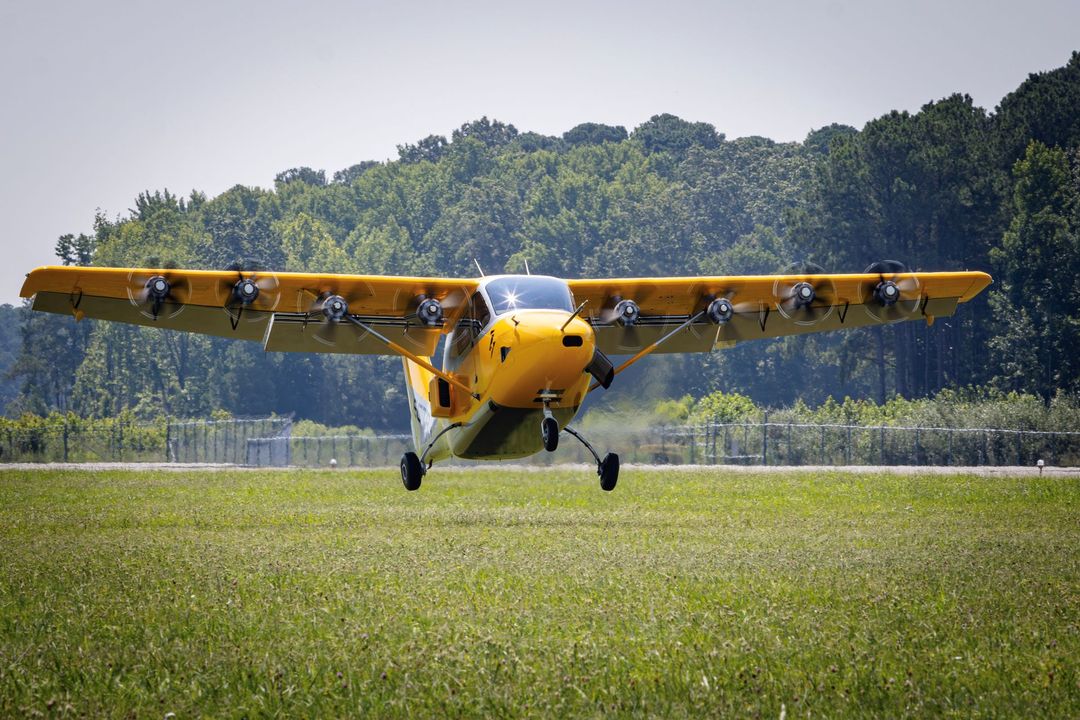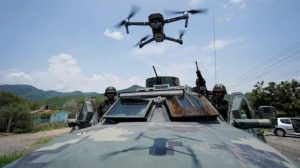U.S. Army Awards Electra R&D Contract for Hybrid-Electric Aircraft Propulsion Systems: An In-Depth Guide
Introduction: Army Aviation at a Crossroads
Imagine a future where Army aircraft glide silently into contested areas, launching from locations no bigger than a soccer field, all while consuming less fuel and providing commanders with unprecedented flexibility. This isn’t a sci-fi scenario but the real vision behind the latest U.S. Army initiative: awarding Electra.aero, Inc. a $1.9 million research contract to push the boundaries of hybrid-electric aircraft propulsion systems. The potential impacts range from battlefield agility to sustainable military operations—let’s explore why this development is so promising.
What Did the Army Award, and Why Electra?
Electra’s New Mission:
The contract, financed through the Small Business Innovation Research (SBIR) program, strives to advance hybrid-electric powertrain, power, and propulsion systems (HEPPS) for future Army aviation platforms. Why Electra?
Electra is a leader in electric aviation, having previously showcased its EL2 prototype’s ultra-short takeoff and landing capabilities (less than 150 feet). This is revolutionary for Army missions, where operating from compact, rugged areas can be crucial for success and safety.
What’s So Special About Hybrid-Electric Propulsion?
- Fuel Efficiency: Hybrid-electric systems can potentially reduce fuel consumption by 25–30% even on short missions—an essential advantage for military logistics and eco-friendliness.
- Flexibility: Allows operation from unprepared or rough terrains inaccessible to larger, fuel-reliant aircraft.
- Safety and Redundancy: Parallel or series/parallel hybrid systems provide backup power sources, enhancing safety and mission resilience.
- Cost Savings: Electra projects future aircraft like the EL9 to have operational costs up to 70% lower than helicopters or eVTOLs, ensuring financial viability for innovation.
Expert Tip: Hybrid systems merge the reliability of internal combustion with the quiet efficiency and rapid torque of electric motors.
The EL9: The Future Army Workhorse?
The EL9 aircraft leads this R&D effort. Here’s what distinguishes it:
- Ultra-STOL: Can operate from areas as short as 150 feet—imagine soccer-field-size clearings.
- Payload & Range: Up to 1,000 pounds payload, 1,000 miles range, bridging the gap between helicopters and small planes.
- Low-Noise, Stealthy Operation: Perfect for supply drops, medevac, or special ops requiring stealth.
- Mobile Power Station: Transforms into a generator for forward-deployed troops.
- Dual-Use Potential: Designed for both military and civilian roles, from disaster relief to battlefield mobility.
Customer Story: During a demo flight, Electra flew the NASA Administrator on the EL2 aircraft—the first-ever electric plane ride for a U.S. agency head. It’s more than just PR; it’s a readiness testament.
The R&D Roadmap: What Will Electra & the Army Actually Do?
In the next 18 months, Electra’s team will focus on:
- Trade Studies & Operational Analysis: Identifying the strategic advantages of hybrid-electric tech for the Army (fuel logistics, agile basing, reduced noise, etc.).
- Modelling & Simulation: Engineering analysis to optimize performance.
- Flight Testing & Technology Evaluation: Collecting essential data to validate and identify potential issues.
- Risk Reduction: Pinpointing and addressing risks early to ensure efficient use of funds and operational benefits.
Hybrid Propulsion: How Does It Work?
- Series Hybrid: The internal combustion engine (ICE) powers a generator that charges batteries powering electric motors—simpler mechanically, but still reliant on fuel.
- Parallel Hybrid: ICE and electric motors drive the propeller, offering redundancy and flexible power distribution.
- Series/Parallel: Combines benefits, balancing or merging power sources as needed.
Innovation Note: Progress in battery technology, like high-density lithium or future solid-state batteries, is crucial. Higher energy density translates to lighter, longer-range aircraft.
Strategic Partnerships: Lockheed Martin Joins the Fray
Lockheed Martin Skunk Works, famed for innovations like the SR-71, has partnered with Electra to accelerate the EL9’s introduction. This collaboration brings:
- Scale and Network: Utilizing Lockheed’s expansive supply chain.
- Tech Acceleration: Advanced digital engineering, rapid prototypes, and sustainment planning.
- Broader Use Cases: Seeking joint DoD and international missions for hybrid Ultra-STOL solutions.
Hybrid Aircraft: Trends, Challenges, and the Big Picture
Trends:
- Agile, distributed operations require adaptable aircraft.
- Defense and civil aviation strategies now focus on sustainability with lower emissions and fuel use.
- Emerging automotive and renewable technologies are entering aerospace.
Challenges:
- Battery challenges: Current energy density can’t match traditional fuels for long-haul or heavy-lift missions.
- Certification demands: Hybrids must meet stringent airworthiness and safety standards, especially military ones.
- Integration difficulties: Effective merging of ICEs, electric propulsion, flight software, and energy management requires top engineering.
Why Does This Matter for the Army—and Beyond?
For the Military:
- Reduces reliance on long supply lines and risk-laden fuel convoys.
- Allows dispersed and unpredictable basing, making assets challenging to target.
- Provides new logistics, medevac, and rapid response options with reduced operational cost and environmental impact.
For the Civilian Market:
- Military advancements will cross over, aiding disaster relief, medevac, and cargo delivery missions with improved aircraft.
- Army investments ease certification and commercialization for civilian uses.
Inside Electra: Who Are the People Powering These Innovations?
Electra is not just a corporation, but a passionate team of aerospace experts, engineers, and test pilots eager to redefine 21st-century flight. Donn Yates, VP of Government Programs, emphasizes creating real-world impacts, not mere advancements: “This work gives the Army a clear path in understanding how hybrid-electric technologies meet operational needs, while providing new logistics capabilities.”
Fun Fact: Electra’s R&D drew inspiration from both remote military operations and the rise of urban air mobility via eVTOLs, aiming for aircraft suited to both Alaskan wilderness and Pentagon helipads.
The Human Side: What Drives Electra’s Team?
- Mission-First Approach: Veterans on the team offer insights into logistical challenges, directly shaping design and testing focuses.
- Collaborative Environment: Engineers and pilots collaborate closely—flight tests inform software development, and field feedback drives rapid iteration.
- Customer-Centric Focus: Electra’s leadership emphasizes “aircrews-first” policy, with adjustments genuinely benefiting operators.
What’s Next? The Road to Army Adoption
Expect to witness:
- Increased Flight Tests: Progressively bringing Electra’s hybrid aircraft to operational readiness.
- Expanded Partnerships: Both within the military sphere and with commercial entities (cargo, medevac, emergency services).
- Regulatory Development: Coordinating with FAA, EASA, and defense bodies for safe, certifiable standards for hybrid-electric aircraft.
- Data-Based Strategies: Army planners will use actual operational data to determine the deployment timeline and methods for these aircraft.
Final Thoughts: The Dawn of a New Aviation Era
The U.S. Army’s collaboration with Electra represents more than a technology pact; it sets the stage for transforming military and global aviation. As boundaries between fixed- and rotary-wing aircraft, electric and fuel engines, military and civilian applications blur, tomorrow’s aircraft will be greener, sharper, and more adaptable than ever. If this excites you as much as it does us, closely follow Electra and the Army’s evolving partnership. Today’s R&D testbed may very well become the battlefield (and hometown) champion of tomorrow.
“The electric revolution isn’t just coming for our cars—it’s coming for our wings.”
Expert advice, real Army needs, and an aviation revolution in motion: such is the prospect of hybrid-electric propulsion—today’s R&D, tomorrow’s battlefield triumph.













